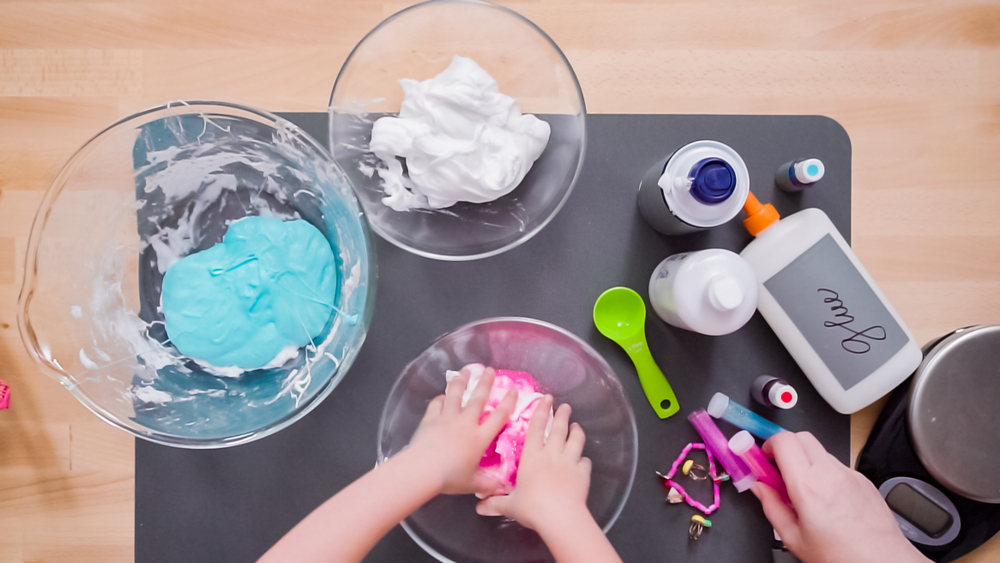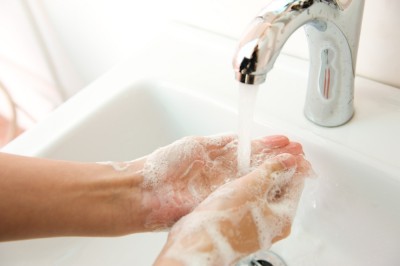If you’re finding yourself in need of ways to keep your kids occupied, you should definitely consider organizing a few at-home science experiments! Often these experiments use items you can find in your kitchen cabinets, which makes it even more convenient to do at home. Science experiments for kids often mimic real-life science phenomenons which make them both a learning experience and fun at the same time.
Follow along for a few easy and educational science experiments you can do at home with your children.
Baking Soda Volcanoes
When it comes to at-home science experiments, one of the most basic ones you can conduct is the baking soda volcano experiment. This will teach your children the basics of chemistry and reactions between different ingredients.
To conduct this experiment, you’ll need baking soda, vinegar, and optional red food coloring for a “lava” effect. Check out the video below for all the tips and tricks you need to know before creating your own baking soda volcano at home!
Chromatography Flowers
A classic science experiment for kids is chromatography flowers that use markers, coffee filters, and water to create beautiful watercolor flowers. Most people have this equipment in their homes and the experiment itself is super easy and straightforward. Plus the result is beautiful and something you can keep around the house as decor!
Check out this video for a step by step guide to creating chromatography flowers at home.
Homemade Sundial
If you’re looking for a science experiment that can help get your kids outside in the sun, why not try making an at-home sundial? It requires almost no supplies other than a pencil or pen and a piece of paper or cardboard. You can definitely make this super creative like the sun tutorial below, or make a more simple version.
This experiment teaches children about the earth’s rotation and opens up an easy educational conversation.
Pepper & Soap Experiment
Proper handwashing is an important habit to instill in your children from a young age. One way to easily explain the power of soap to your children is to try this pepper and soap experiment!
To try this, fill one shallow dish with water and pepper and another with soap. Get your child to dip their finger into the pepper water and then dip into the soap. The reaction is that the soap repels the pepper water, which shows a visual of how soap can clean bacteria from your hands.
Homemade Ice Cream In A Bag
One science experiment that doubles as an educational experience and a tasty treat is making homemade ice cream in a bag! To do this, you’ll need a Ziploc bag, half and half cream, sugar, vanilla extract, ice, and salt. Once the mixture is created, you can top it off with any treats you want like gummy bears, sprinkles, or chocolate chips.
For all the steps on creating homemade ice cream in a bag, check out the video below.
Diet Coke & Mentos
A classic science experiment for kids that always gets an enthusiastic reaction is the coke and mentos experiment. The combination of these two ingredients creates a major and impressive reaction, but definitely be sure your kids stand back for this one!
Check out a step by step guide for creating this experiment at home below.
Elephant Toothpaste
Elephant toothpaste is an adorable foaming experiment that will feel like a true chemistry experience! To conduct this experiment you’ll need large jars, a funnel, hydrogen peroxide, dish soap, food coloring, warm water, and dried yeast. This teaches the heat-releasing science reaction while also doubling as a fun sensory experience once the foam is created.
For a step by step guide on creating “elephant toothpaste,” check out the quick guide below.
Magic Rainbow Milk
If your child is interested in magic tricks, this science experiment could be a good option for them! Start by putting a few drops of food coloring into a shallow bowl of milk. Next, add a little dish soap to a toothpick or a Q-tip and touch the food coloring. The colors will swirl around appearing like magic, but in reality, the soap causes a chemical reaction that breaks the surface tension.
Growing Gummy Bears
The growing gummy bear experiment is always a fun one to try with kids! It teaches them about the process of osmosis and how different liquids affect the size of the gummy bear. Have your kids make predictions about what they think will happen to the gummy bears to make this somewhat of a guessing game.
To conduct the gummy bear osmosis experiment, follow the video below for a step by step guide and everything you’ll need.
At-Home Lava Lamp
Making a lava lamp at home is actually easier than you’d think and doubles as a fun science experiment for kids! It teaches density and how oil and water don’t mix, but also creates a fun piece of decor they can keep in their room. In terms of supplies, you’ll need empty bottles, food coloring, oil, and optional glitter.
Check out this step by step guide to make a lava lamp from the comfort of your own home.
Growing Rock Candy In A Glass
The rock candy at-home science experiment is always a hit with kids! This works as both a sweet treat and a science experiment as the kids can watch the sugar crystals form and grow. This experiment definitely does require patience and can take up to a week for the rock candy to form, but the end result is always rewarding.
To conduct this experiment, you’ll need water, sugar, and food coloring, which are all items you likely already have at home. Check out a step by step guide on how to grow your own rock candy below!
Homemade Slime
What kid wouldn’t want to make their own homemade slime? To create slime at home, you’ll need borax, water, Elmer’s glue, and food coloring. This teaches children about polymers, which are molecules that can stick together to be a solid or spread apart to be a liquid, just like slime.
One thing to note, this one can definitely become a little messy, so be careful with where you conduct this experiment. Follow the video below for some easy tips and tricks to making slime at home!



